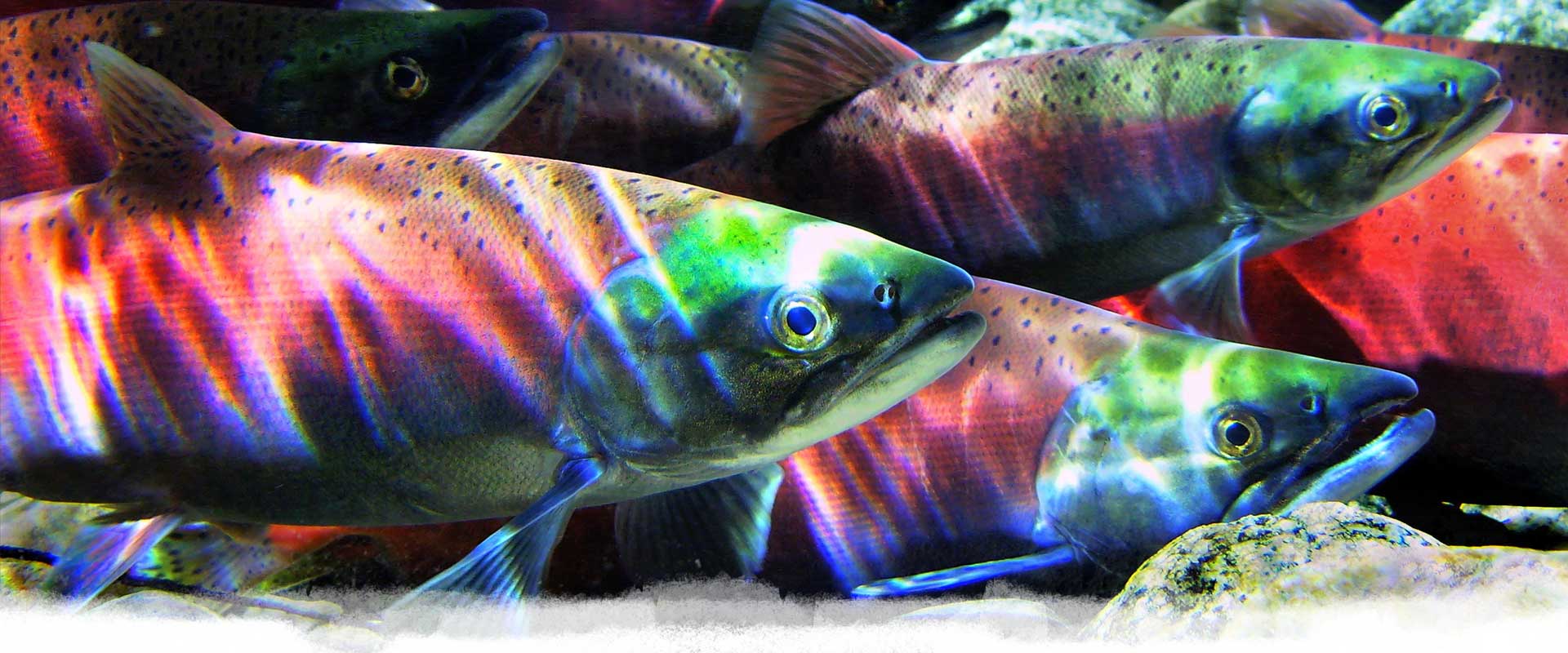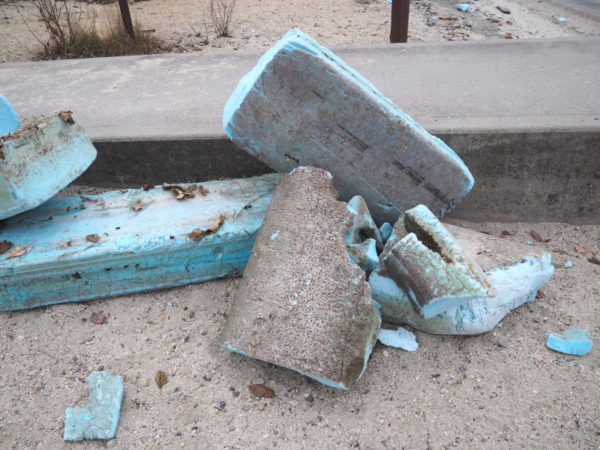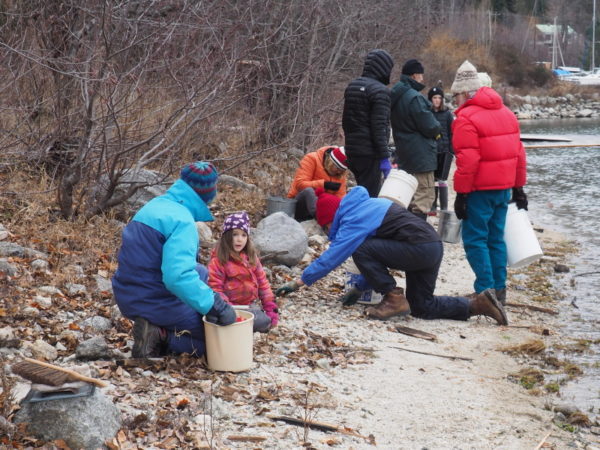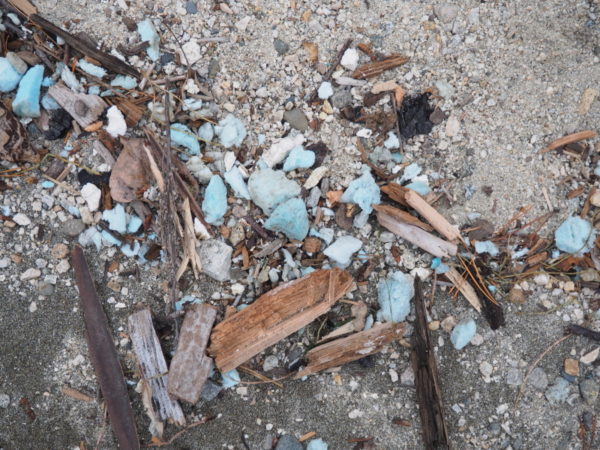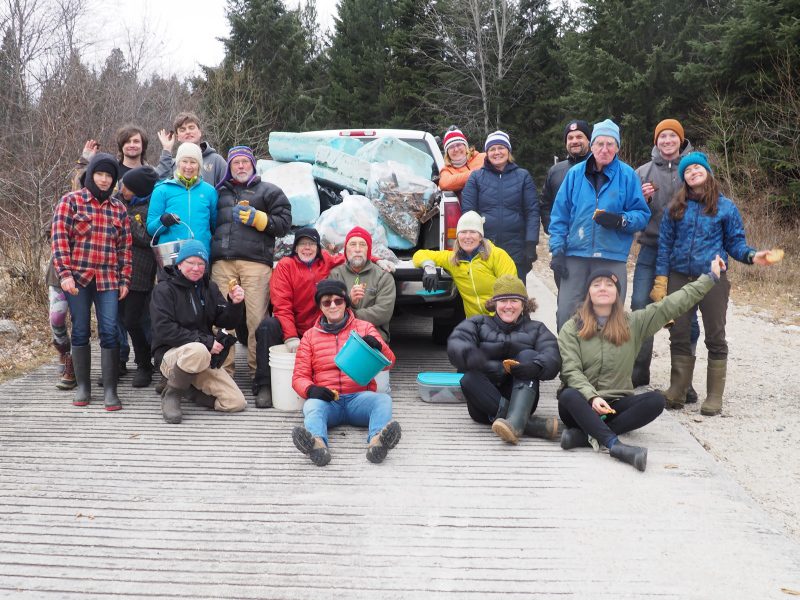
02 Dec Community Clean-up at Kokanee Creek Provincial Park
Photo Credit: Joanne Siderius
Answering the call
On the chilly Sunday morning of December 1, 2019 members of the Kootenay Lake community bundled up and got to work cleaning-up massive amounts of StyrofoamTM at Kokanee Creek Provincial Park. This clean-up was organized by Anne Pigeon owner and operator of RAP Park Contracting, who first sent out a call for help on Saturday morning.
Intense winds in the past week had caused a nearby dock to crash into the beach and pieces of it’s StyrofoamTM underside quickly began to chip off and come loose, littering the shores of the park with blue plastic. This raised concern for the health of the birds and fish who can mistake this plastic foam for food and become sick from ingesting it in abundance. Before the clean-up ducks were observed eating the smaller pieces of foam in the sand.
On Sunday morning , this beloved local spot was quickly packed with people who answered the call. Over 30 people showed up with their buckets, gloves and other tools to pick up pieces large and small. Despite the cold winter winds coming off the lake, this group worked for two hours and gathered enough StyrofoamTM to fill three truck loads. It was impossible to get every piece but it began to look much better once the team thoroughly combed the shoreline.
A perpetual problem
In recent years there has been an alarming increase of polystyrene (StyrofoamTM) on Kootenay Lake beaches. The majority of this comes from old dock floats which, when unprotected by a hard plastic encasement, are broken down to small blue and white pieces which get washed up on shore mixing into the sand and organic material with the wind and waves.
While there is a lack of scientific studies on polystyrene impacts on freshwater ecosystems, marine studies show that many animals, especially young fish, mistake the plastic for food. After ingesting it, they exhibit a loss of appetite, toxic poisoning, and starvation. One can assume that freshwater fish such as trout and kokanee also eat the small pieces.
Polystyrene, made from petrochemicals, was first manufactured in the 1970’s and now has thousands of uses. It is water resistant and very lightweight when made into foam. Non-biodegradable, StyrofoamTM lasts for hundreds of years, and is not easily recycled. Being 95% gas, it floats very well and is promoted as an excellent, cheap material for docks. Buoyancy billets can be blue extruded polystyrene foam (XPF) or compressed white spheres molded into blocks. Newer docks use rigid plastic boxes which keep the StyrofoamTM from getting into the environment.
More to be done
There are still small pieces that have been frozen into the the sand that will be picked up once the winter thaw begins. As well the large dock that is causing the StyrofoamTM pollution will need to be removed. There is currently a team working to remove the dock and contain the StyrofoamTM that is chipping from the underside. Community clean-ups will be taking part later this spring, so stay tuned for your chance to take part in helping mitigate this issue on the lake. In the meantime we encourage all residents and visitors of Kootenay Lake to do their part when on the shoreline and pick up at least 3 pieces of any garbage you see. A little goes a long way.
Thank you…
to Anne Pigeon for organizing this event
to Joanne Siderius for inviting the community and taking great photos
to all who showed how much they love Kootenay Lake by giving their time to make a difference.
If you want to know more please contact us at info@friendsofkootenaylake.ca

